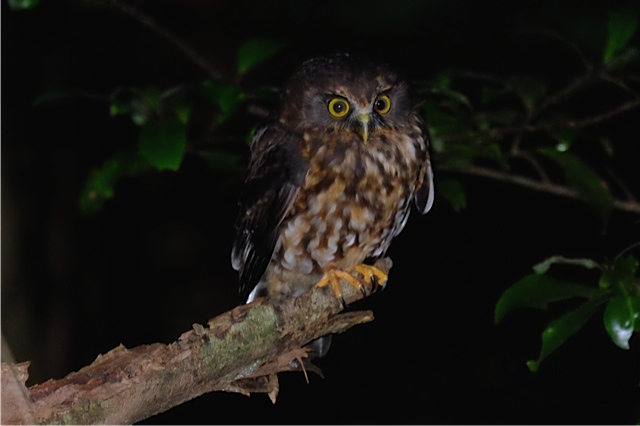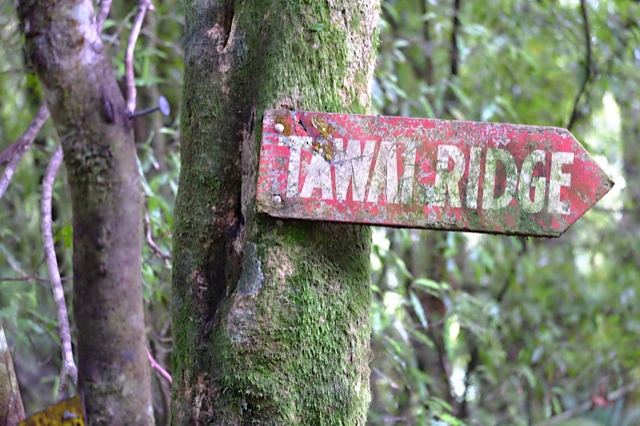Hunting birds without guns: A visit to Otamatuna
Wandering through much of Aotearoa’s remnant bush in 2014 can be a lonely experience. One has more chance of seeing a hobbit than a kaka or kokako, and the experience is a long way from Joseph Banks’ much repeated description of the the dawn chorus in Queen Charlotte Sound in 1770:
“I was awakened by the singing of the birds ashore, from whence we are distant not a quarter of a mile. Their numbers were certainly very great. They seemed to strain their throats with emulation, and made, perhaps, the most melodious wild music I have ever heard, almost imitating small bells, but with the most tunable silver imaginable, to which, may be, the distance was no small addition.”
A couple of years back, while helping the good folks at Goodnature lay some traps in the Orongorongo Valley, I’d been lamenting that the New Zealand birds’n’bush was doing its own take on Silent Spring – with predators rather than pesticides as the culprit. I moaned that the only place I’d heard a decent dawn chorus was on the offshore ‘lifeboat’ islands like Kapiti and Tiritiri Matangi.
Robbie Van Dam (Goodnature) and Darren Peters (Department of Conservation) both urged that I had to get up and check out Otamatuna. I’d never heard of Otamatuna, or Te Urewera Mainland Island (‘TUMI’), and Google didn’t shed a lot of light either.
My mate, ecologist Tim Park, was keen for a squiz as well. Each of us have been involved in restoration work, and we were excited to see a forest ecosystem that had been touted as showing off the benefits of sustained pest control. Tim was the plant geek and I was the bird nerd with a lifelong kokako obsession. Darren could see the mistletoe and grey ghost glint in our eyes.
Darren handed over some maps and then – family and work schedules cleared – we found ourselves a long way from a Wellington craft beer and heading north on a three-day mission into Tuhoe territory (Waimana Valley) for a TUMI tour.
Intensively managed since the mid-90s, TUMI is the largest mainland island in New Zealand. It has been a testing ground for developing predator control and research; there’s no 1080 used in the park, and ground trapping has been effected by DoC and local contractors. The park has provided a bastion for iconic endangered species like kokako, whio, brown kiwi and mistletoe – other than weka there’s a full complement of North Island forest birds. The goal is the restoration of the ‘mauri’ of the forest.
We checked in en route at the brand new Tuhoe HQ (where an aunty gave us an impromptu tour of the state of the sustainable art building) and said kia ora to ex-Maori warden ‘Spady’ before heading off the tar-seal in our conspicuously shiny black Holden rental.
Darren and Robbie’s pledge was realised 10 minutes after heading up the ridge from Matahi Valley Rd. Our eyes scanned the tops after a (soon-to-be) tell-tale rustle and there was a pair of kokako nimbly bouncing about a rewarewa like squirrels; their grey cloak given a blue steel polish by the sun. Magic. The park is a stronghold for the North Island Kokako, containing well over 100 pairs (from 8 pairs in 1994).
It’s fairly rugged hill country (up steep ridges and down into guts) but the June weather was kind and the ground – carpeted in miro and hinau berries was dry. We went into Otamatuna hut for Thursday night and after an explore down ‘Pete’s’ trap line, met three ruru on the way back up from Waipapa stream with the help of head torches (cutting it fine with the shorter June days). A morepork duo put on a silent dog fight a couple of metres from the track. At the hut, HQ for the TUMI, we tucked into books and maps giving context for the work that’s gone into the project, and paid tribute to legends like Jeff Hudson who were key in saving the kokako. Kiwi called throughout the night.
On Friday we tiki-toured down a stoat line to Waiiti Stream, coming out near Koaunui hut (though not exactly where we intended to ; -). We went on a whio search and unwittingly flushed out a blue duck from the riverbank 300m or so north of the the hut. With another taonga ticked, we headed up the spur to the area that Darren’s maps told us was kokako boulevard, to share a hut with a trapper.
We were up early the next morning for the promised kokako action on the Otamatuna ridge with the sun lifting the curtain on a pair doing a duet: one on each side of the track for plangent surround sound. This was the dawn chorus of the eco fables. At least five other kok’ sightings later (along a kilometre or so of the ridge line) and we were well sated; straining necks, camera lens and microphones.
Along with a kaka shredding up a rimu tree top like an axe-man at Fieldays, and a veritable Forest & Bird poster of kereru, rearea, tui, robin, miromiro, rifleman etc, the morning ridge concert was up there with the richest NZ nature experiences we’ve had.
We skidded down the track (that trampers coming the other way call ’the wall’) to the Lions club, and had the added bonus of the Holden still being by the side of the road when we came out!
Seeing the forest in such rude health was awesome – especially with massive rimu, tawa, miro, rewarewa and rata dominating – and it was a revelation to see the results of all the trapping and conservation mahi. Though the eviscerated possums (pig tucker?) hanging from trunks did give the operation a touch of Game of Thrones gothic.
The experience prompted big picture musing about how such encounters could be replicated across NZ. Especially as ambitious projects like The Halo, Ark in the Park and Pest Free New Zealand grapple with those questions. Are such encounters possible closer to urban environments? In places like Polhill Gully, next to Zealandia, it’s already happening, with kaka, saddleback, toutouwai and hihi spilling over the sanctuary fence into backyards.
When I reported back to thank the DoC people for the opportunity, Darren replied:
“Nice for you to witness what permanent suppression does for our bush friends.”
Too right Darren, not just nice but inspirational. Joseph Banks would’ve been reaching for the thesaurus …


